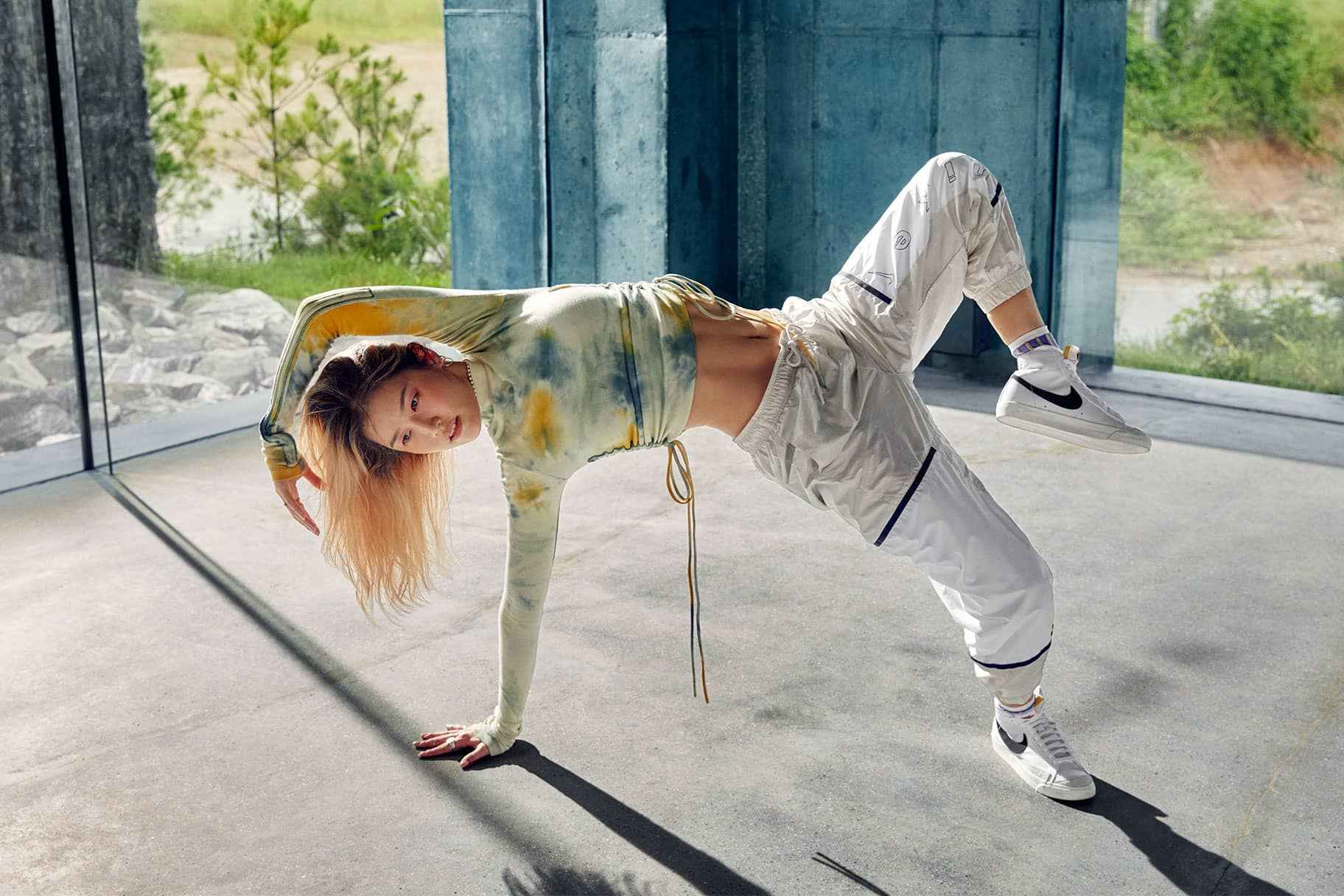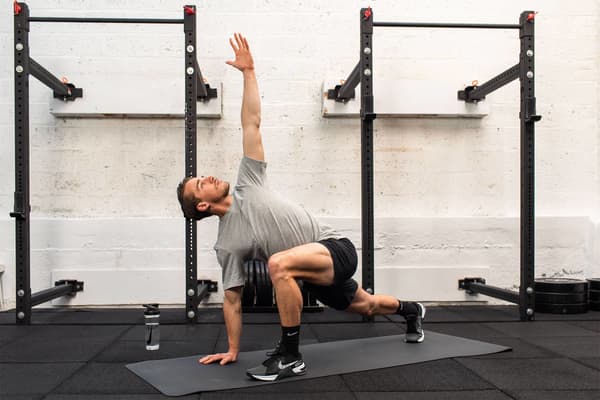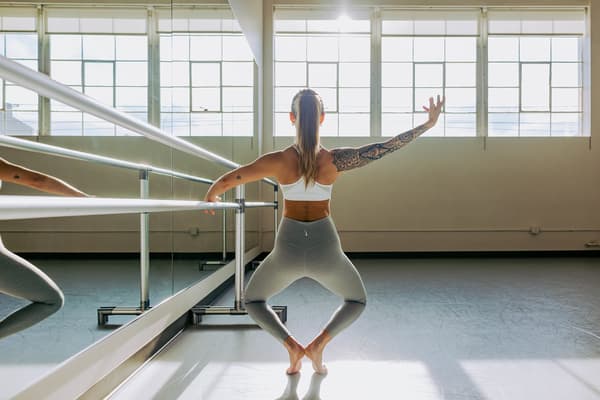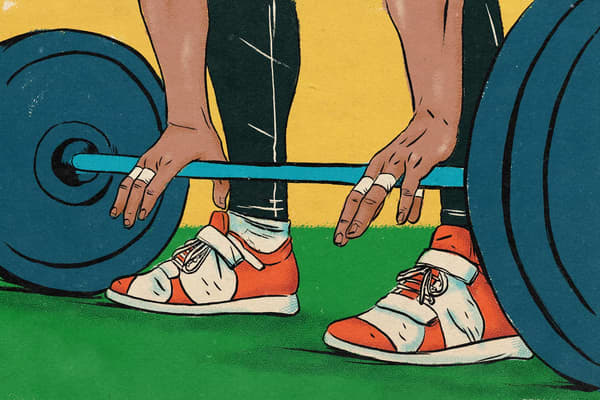What Are the Benefits of Dancing?
Sport & Activity
Whether in your living room or in the studio, dancing offers a host of expert-backed health benefits.

Dancing is for everyone. Besides being a form of physical and emotional expression, it offers health benefits for the body and mind. While traditional dance classes often involve following choreography and memorising steps, popular fitness classes that emphasise different styles of movement have introduced the craft to an even wider audience. And there doesn't have to be an instructor or partner around. Dancing can be done (almost) anywhere.
"It's important to acknowledge that every body can dance; dance is dance", Mia Morris, executive director of Dance for All Bodies, said. "Any intentional movement, and even unintentional movement, can be and should be considered dance. The only determining factor should be whether or not someone considers their own movements to be dancing".
Here, experts weigh in on the science-backed benefits of dancing.
What are the benefits of dancing?
1.Dancing is a good cardio workout.
According to the American College of Sports Medicine, dancing is considered an aerobic activity as it "uses large muscle groups, can be maintained continuously and is rhythmic in nature". Research suggests a link between cardiovascular health and physical activity, and dance provides a prime opportunity to increase physical activity.
Some forms of dance such as Irish set dance and Scottish country dance are noted to be excellent aerobic activity; though you don't have to do high-energy forms of dance to reap benefits.
"Dancing more slowly is great for working on improving your activity level, especially if you're just starting out", said Alyssa Arms, PT, DPT, OCS and owner of Back in Step Physical Therapy. "Moving more quickly will particularly help for overall heart health—just make sure you're working in a [heart rate] zone that is right for you and for your health status".
Beyond strengthening your heart, dancing might abate other conditions, too. A 2016 study found that dancing at moderate intensity reduces the risk of cardiovascular disease.2.Dancing can improve muscular endurance and strength.
Just as different types of dance can range in intensity and style, they can also emphasise various muscular movement patterns, Carrie Skony, DC and CCSP, said. For example, classical ballet requires slow, controlled movements with periods of jumping and leaping, which improves muscular endurance in the core, arms and legs.
"This type of strengthening can help develop the long lines and toned muscles that are often associated with classical ballet", Skony said.
According to a 2019 study in Anatomy, ballet helps the muscles adapt as the body must adjust to the five basic leg positions that turn and rotate the legs. Researchers noted that these adaptations lead to postural stability, which in ballet requires all of the muscles in the body. And these postural developments can counteract the effects of sitting at work or for commutes, Skony said.
If you are hoping to try another type of dance, Skony said that more fast-paced styles—such as hip-hop, jazz or ballroom—can require explosive strength. A 2014 study in the Journal of Sports and Physical Education suggests that dance builds strength because muscles are forced to resist body weight, while at the same time endurance increases as muscles adapt to working harder for longer periods of time (with ballroom and line dancing specifically noted to be beneficial for endurance).
3.Dance promotes coordination, balance and agility.
Different styles of dance come with their own set of moves, positions and steps that, when combined, make a routine come to life. Putting these elements together involves coordination, balance and agility.
"Dance usually requires stepping in different directions, standing on one leg (even if just for a second or two) and [letting] different parts of your body move at the same time", Arms said.
A 2021 study suggested dance can improve motor functions for Parkinson's patients. In the study, researchers found evidence that several weeks of dance training increased balance, improved sitting-to-standing and reduced freezing of gait in study participants.
"What is especially beneficial about dance is that it requires integrated and multi-directional movements, meaning different parts of the body have to coordinate and work together for complex movement patterns", Skony said.
4.It can improve bone mineral density.
Research has suggested that high-impact exercises help bone tissue grow as force is placed on them during weight-bearing exercises such as dancing. Allegro ballet—rapid jumping steps—and tap dance offer increased impact on the lower body, while styles that include weight bearing on the arms—such as breaking and modern—have bone density benefits for the upper body, Skony said.
"Bones become stronger by being exposed to mechanical [physical] stresses", she said. "Therefore, the greatest benefit to bone health is with impact activities like jumping, running and weight training. Since most dance classes are weight-bearing in nature and many involve jumping, when done consistently, dance offers great benefits to its participants' bone health, especially in the lower body".
A 2019 study on postmenopausal women with osteopenia (bone loss and weakening of the bones) found dance improved bone mineral density. It suggested that dance is a suitable complement to aid pharmaceutical and other treatment approaches in improving bone mineral density.
5.It may improve your mood.
Working with a licensed professional to address any mental health needs is key, but research has suggested that dance can supplement therapeutic interventions. For example, a 2019 systematic review in Frontiers in Psychology found dance therapy to be an effective addition to a treatment plan for adults with depression. Researchers mentioned the non-verbal component of dance, where participants can express emotions without words.
"Dance is freeing", Morris said. "It provides an outlet to be your fully authentic self in a universally understood language. Dance can enable you to embody the emotions you can't name or tell the story you can't put into words".
Further, a 2014 meta analysis found consistent positive effects of using dance in therapy, and researchers suggested that dance can not only lower depression and anxiety symptoms, but also increase mood and personal well-being.
Because there are so many styles of dance, trying out a few different genres may come with varying benefits.
"There are hundreds of options out there, whether it's ballet, hip-hop, swing dancing or something else", Arms said. "Some styles, naturally, may be harder on your knees or demand more flexibility to seriously pursue. There's something out there for everyone".
Words by Ashley Lauretta





